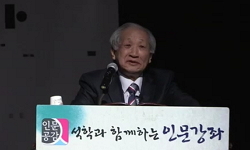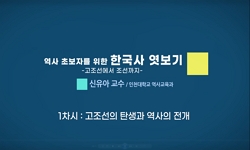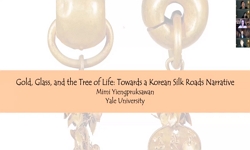Discoveries of Hwangnyongsa-style metal belts, usually brackets and belts as well as round and edge ornaments, excavated from the lower part of the pillar built in the center of this wooden pagoda in Gyeongju led the existence of this site to become k...
http://chineseinput.net/에서 pinyin(병음)방식으로 중국어를 변환할 수 있습니다.
변환된 중국어를 복사하여 사용하시면 됩니다.
- 中文 을 입력하시려면 zhongwen을 입력하시고 space를누르시면됩니다.
- 北京 을 입력하시려면 beijing을 입력하시고 space를 누르시면 됩니다.
https://www.riss.kr/link?id=A105907878
-
저자
최정범 (대동문화재연구원)
- 발행기관
- 학술지명
- 권호사항
-
발행연도
2018
-
작성언어
Korean
-
주제어
황룡사형 대장식구 ; 당식 대장식구 ; 북조 ; 신라 ; 외위 ; Hwangnyongsa-style metal belt ; Tang-style metal belt ; Northern Dynasty ; Silla ; Oewie
-
등재정보
KCI등재
-
자료형태
학술저널
-
수록면
125-153(29쪽)
-
KCI 피인용횟수
3
- DOI식별코드
- 제공처
- 소장기관
-
0
상세조회 -
0
다운로드
부가정보
다국어 초록 (Multilingual Abstract)
One characteristic feature of Hwangnyongsa-style metal belts is that the ornament and the pattern are raised together; this means that when a belt is worn it buckled by inserting a bracket needle into a round ornament. This is different from the inverted leap-like shape of a metal belt and somewhat similar to the way that these items are depicted as being buckled in Chinese burial mound and mural figures. Most of the patterns seen on these metal belts are also shared with decorative designs seen on reliefs and murals from North dynasty and Sui dynasty ancient tombs; on this basis, these artifacts can be viewed as Chinese-influenced Silla metal belts.
Hwangnyongsa-style and Tang-style metal belts have also not been differentiated from one another in conventional interpretations and it has been considered reasonable to assume that the method of ornament making innovatively changed from the use of patterns to none. Hwangnyongsa-style metal belts can therefore be included within the same category as their Tang-style counterparts, as part of the evolution of these items in China.
It is known that the Silla dynasty formed political ties with the Chinese dynasty at some point during the middle of the sixth century via the tributary appointment system. This led to a transformation of cultures and products inside China to fit the situation within the Silla dynasty which was then utilized for regional control; the Silla dynasty ruled rural areas by providing Oewie to local forces newly incorporated into the area and by including numerous local owners into the Gyeongwie system subsequent to unification. The time between the mid-sixth century and the early seventh century when the Oewie system was functioning within the Silla dynasty therefore functioned as a tool for regional control and is consistent with the timing of the appearance of Hwangnyongsa-style metal belts in rural areas and changes in their form.
Discoveries of Hwangnyongsa-style metal belts, usually brackets and belts as well as round and edge ornaments, excavated from the lower part of the pillar built in the center of this wooden pagoda in Gyeongju led the existence of this site to become known. Subsequent excavations have intermittently targeted local burial tombs but few cases have so far been found; it is nevertheless important to carefully consider the appearance, development, and extinction of these tombs as occurrences are only known from a limited time period between the late sixth century and early seventh century.
One characteristic feature of Hwangnyongsa-style metal belts is that the ornament and the pattern are raised together; this means that when a belt is worn it buckled by inserting a bracket needle into a round ornament. This is different from the inverted leap-like shape of a metal belt and somewhat similar to the way that these items are depicted as being buckled in Chinese burial mound and mural figures. Most of the patterns seen on these metal belts are also shared with decorative designs seen on reliefs and murals from North dynasty and Sui dynasty ancient tombs; on this basis, these artifacts can be viewed as Chinese-influenced Silla metal belts.
Hwangnyongsa-style and Tang-style metal belts have also not been differentiated from one another in conventional interpretations and it has been considered reasonable to assume that the method of ornament making innovatively changed from the use of patterns to none. Hwangnyongsa-style metal belts can therefore be included within the same category as their Tang-style counterparts, as part of the evolution of these items in China.
It is known that the Silla dynasty formed political ties with the Chinese dynasty at some point during the middle of the sixth century via the tributary appointment system. This led to a transformation of cultures and products inside China to fit the situation within the Silla dynasty which was then utilized for regional control; the Silla dynasty ruled rural areas by providing Oewie to local forces newly incorporated into the area and by including numerous local owners into the Gyeongwie system subsequent to unification. The time between the mid-sixth century and the early seventh century when the Oewie system was functioning within the Silla dynasty therefore functioned as a tool for regional control and is consistent with the timing of the appearance of Hwangnyongsa-style metal belts in rural areas and changes in their form.
국문 초록 (Abstract)
황룡사형 대장식구의 큰 특징은 과판과 문양이 함께 주출되고 帶를 착용하였을 때 교구의 교침을 원형과판에 끼워 결구한다. 이는 역심엽형 대장식구와는 이질적이며, 오히려 중국의 도용과 벽화의 인물에 표현된 대장식구의 착용법에 가깝다. 아울러 대장식구에 주출된 문양의 대부분은 北朝~隋代고분의 부조 및 벽화에 표현된 장식도안과 상통하기에 중국의 영향을 받아 신라에 도입된 대장식구로 볼 수 있다.
더하여 황룡사형 대장식구와 당식 대장식구는 기존의 견해에서처럼 단절적이고 별개로 구분되는 대장식구가 아니라 문양이 주출된 것에서 무문양으로, 교구 제작 방법의 변화라는 형식적 변이를 거친 것으로 봄이 타당하다. 따라서 황룡사형 대장식구는 당식 대장식구의 한 범주로 포함시킬 수 있으며 이는 중국에서 당식 대장식구의 변천과정과 궤를 함께 하는 것으로 볼 수 있다.
신라는 6세기 중엽의 어느 시점부터 중국 왕조와 조공책봉 관계를 통해 정치적 유대관계를 형성하고, 중국의 문물을 신라 내부의 상황에 맞게 변용하여 지방통치에 활용하였다. 신라는 새롭게 영역에 편입된 지역 세력들에게 외위를 지급하여 지방을 통치하다가 통일 이후 외위를 소지한 지방민들을 경위제로 대거 편입시킨다. 외위제가 신라 내에서 기능하던 6세기 중엽이후 7세기 초 사이의 시간은 황룡사형 대장식구가 지방에 등장하고 형식의 변화를 겪는 시기와 부합하여 신라의 지방통치에 한 도구로써 기능하였다.
교구와 방형 및 원형의 과판, 대단장식으로 구성된 황룡사형 대장식구는 경주 황룡사지 목탑 심초 하부에서 출토되어 그 존재가 알려지게 되었다. 이후 지방 고분군에서 간헐적으로 출토되...
교구와 방형 및 원형의 과판, 대단장식으로 구성된 황룡사형 대장식구는 경주 황룡사지 목탑 심초 하부에서 출토되어 그 존재가 알려지게 되었다. 이후 지방 고분군에서 간헐적으로 출토되었는데 그 사례가 많은 편은 아니다. 그러나 6세기 후반~7세기 초라는 한정된 기간에만 확인되고 있어서 등장과 전개, 소멸에 대해 살필 필요가 있다.
황룡사형 대장식구의 큰 특징은 과판과 문양이 함께 주출되고 帶를 착용하였을 때 교구의 교침을 원형과판에 끼워 결구한다. 이는 역심엽형 대장식구와는 이질적이며, 오히려 중국의 도용과 벽화의 인물에 표현된 대장식구의 착용법에 가깝다. 아울러 대장식구에 주출된 문양의 대부분은 北朝~隋代고분의 부조 및 벽화에 표현된 장식도안과 상통하기에 중국의 영향을 받아 신라에 도입된 대장식구로 볼 수 있다.
더하여 황룡사형 대장식구와 당식 대장식구는 기존의 견해에서처럼 단절적이고 별개로 구분되는 대장식구가 아니라 문양이 주출된 것에서 무문양으로, 교구 제작 방법의 변화라는 형식적 변이를 거친 것으로 봄이 타당하다. 따라서 황룡사형 대장식구는 당식 대장식구의 한 범주로 포함시킬 수 있으며 이는 중국에서 당식 대장식구의 변천과정과 궤를 함께 하는 것으로 볼 수 있다.
신라는 6세기 중엽의 어느 시점부터 중국 왕조와 조공책봉 관계를 통해 정치적 유대관계를 형성하고, 중국의 문물을 신라 내부의 상황에 맞게 변용하여 지방통치에 활용하였다. 신라는 새롭게 영역에 편입된 지역 세력들에게 외위를 지급하여 지방을 통치하다가 통일 이후 외위를 소지한 지방민들을 경위제로 대거 편입시킨다. 외위제가 신라 내에서 기능하던 6세기 중엽이후 7세기 초 사이의 시간은 황룡사형 대장식구가 지방에 등장하고 형식의 변화를 겪는 시기와 부합하여 신라의 지방통치에 한 도구로써 기능하였다.
참고문헌 (Reference)
1 賀云, "六朝瓦當與六朝都城" 文物出版社 2005
2 李漢祥, "황룡사 창건 및 목탑 축조의 사회적 배경" 대전대학교 인문과학연구소 49 : 2012
3 李漢祥, "황금의 나라 신라" 김영사 2004
4 이한상, "허리띠 분배에 반영된 고대 동북아시아의 교류양상" 동북아역사재단 (33) : 349-382, 2011
5 최정범, "한반도 唐式 帶裝飾具의 전개와 의미" 한국고고학회 (106) : 210-251, 2018
6 경상북도, "중고시기-중앙집권과 체제정비" 신라 천년의 역사와 문화 편집위원회 2016
7 정진, "의성 금성산고분군 출토 금공품의 변천" 경북대학교대학원 2017
8 권오영, "역사고고학연구의 새로운 지평 -法制考古學의 제창-『三國時代 律令의 考古學的 硏究』, 山本孝文 저" 한국고고학회 (65) : 75-83, 2007
9 박성천, "신라 황룡사형 대금구의 출토양상과 의미" 慶南文化財硏究院 (創刊) : 2007
10 이한상, "신라 복식의 변천과 그 배경" 신라문화연구소 43 (43): 137-172, 2014
1 賀云, "六朝瓦當與六朝都城" 文物出版社 2005
2 李漢祥, "황룡사 창건 및 목탑 축조의 사회적 배경" 대전대학교 인문과학연구소 49 : 2012
3 李漢祥, "황금의 나라 신라" 김영사 2004
4 이한상, "허리띠 분배에 반영된 고대 동북아시아의 교류양상" 동북아역사재단 (33) : 349-382, 2011
5 최정범, "한반도 唐式 帶裝飾具의 전개와 의미" 한국고고학회 (106) : 210-251, 2018
6 경상북도, "중고시기-중앙집권과 체제정비" 신라 천년의 역사와 문화 편집위원회 2016
7 정진, "의성 금성산고분군 출토 금공품의 변천" 경북대학교대학원 2017
8 권오영, "역사고고학연구의 새로운 지평 -法制考古學의 제창-『三國時代 律令의 考古學的 硏究』, 山本孝文 저" 한국고고학회 (65) : 75-83, 2007
9 박성천, "신라 황룡사형 대금구의 출토양상과 의미" 慶南文化財硏究院 (創刊) : 2007
10 이한상, "신라 복식의 변천과 그 배경" 신라문화연구소 43 (43): 137-172, 2014
11 나은주, "신라 문무왕대 外位制 폐지와 지방민의 동향" 국민대학교 대학원 2013
12 김도영, "신라 대장식구의 전개와 의미" 한국고고학회 (107) : 72-123, 2018
13 이희준, "대가야고고학연구" 사회평론 2017
14 朱甫暾, "금석문과 신라사" 지식산업사 2002
15 김재열, "경산지역 고분의 장신구 연구" 영남대학교 대학원 2008
16 김준식, "가야 횡혈식석실의 성립과 전개" 경북대학교 대학원 2014
17 鄭岩, "魏晋南北朝壁畵墓硏究" 文物出版社 2016
18 臼杵勳, "韓國의 銙帶金具에 대하여" 伽倻通信編輯部 18 : 1987
19 西安市文物保護考古硏究院, "隋韋協墓發掘簡報" 2015 (2015): 2015
20 최정범, "釜山 福泉洞 65號墳 靑瓷 碗의 再檢討" (사)한국문화유산협회 (29) : 127-160, 2017
21 陝西省考古硏究所, "西安洪慶北朝, 隋家族遷葬墓地" (10) : 2005
22 西安市文物保護考古所, "西安北周康業墓發掘簡報" (6) : 2008
23 陝西省考古硏究所, "西安北周安伽墓" 文物出版社 2003
24 馬冬, "西北地區古代服飾鈕系件硏究" 四川出版集團 四川美術出版社 2009
25 박보현, "統一新羅形 帶金具의 分布와 發生時期" 신라문화연구소 (23) : 229-250, 2004
26 河北省文物硏究所, "河北平山縣西岳村隋唐崔氏墓" 2001 (2001): 2001
27 김성실, "東아시아 出土 晉式帶金具의 成立過程과 그 周邊" 영남대학교 대학원 2012
28 朝鮮總督府, "朝鮮古蹟圖譜 三" 151-, 1916
29 홍보식, "新羅 後期 古墳文化 硏究" 춘추각 2003
30 朱甫暾, "新羅 地方統治體制의 整備過程과 村落" 신서원 1998
31 西北大學文化遺産學院, "彭陽海子 北魏,隋墓淸理簡報" 2015 (2015): 2015
32 山西省考古硏究所, "太原北齊徐顯秀墓發掘簡報" 2003 (2003): 2003
33 李愛國, "太原北齊張海翼墓" 2003 (2003): 2003
34 김지현, "古代 東亞細亞 出土 晉式帶金具의 成立과 展開" 한국상고사학회 75 (75): 221-251, 2012
35 南京市博物館, "南京市雨花台區南朝畵像磚墓" (6) : 2008
36 賀云, "南京出土六朝椽當初硏" (5) : 2009
37 山西省考古硏究所, "北齊東安王 睿墓" 文物出版社 2006
38 王克林, "北齊庫狄 洛墓" (3) : 1979
39 中國社會科學院考古硏究所, "北魏洛陽永寧寺" 中國大百科全書出版社 1996
40 張勇盛, "北朝時期窯業技術的初步硏究" 2016 (2016): 2016
41 陝西省考古硏究所, "北周武帝孝겓發掘簡報" 1997 (1997): 1997
42 최정범, "中國 唐式 帶裝飾具의 登場과 展開" 중앙문화재연구원 (22) : 95-130, 2017
43 山本孝文, "三國時代 괹令의 考古學的 硏究" 서경 2006
44 李漢祥, "7世紀 前半의 新羅 帶金具에 대한 認識 -‘皇龍寺型 帶金具’의 설정" 古代硏究會 7 : 1999
45 이성호, "6세기 新羅 外位制의 성립과정" 동국대학교 대학원 2012
46 李漢祥, "6世紀 新羅의 帶金具 -‘樓岩里型 帶金具’의 설정" 韓國考古學會 35 : 1996
동일학술지(권/호) 다른 논문
-
- 영남고고학회
- 주영민
- 2018
- KCI등재
-
- 영남고고학회
- 이동희
- 2018
- KCI등재
-
- 영남고고학회
- 김훈희
- 2018
- KCI등재
-
- 영남고고학회
- 김일중
- 2018
- KCI등재
분석정보
인용정보 인용지수 설명보기
학술지 이력
| 연월일 | 이력구분 | 이력상세 | 등재구분 |
|---|---|---|---|
| 2027 | 평가예정 | 재인증평가 신청대상 (재인증) | |
| 2021-01-01 | 평가 | 등재학술지 유지 (재인증) |  |
| 2018-01-01 | 평가 | 등재학술지 유지 (등재유지) |  |
| 2015-01-01 | 평가 | 등재학술지 유지 (등재유지) |  |
| 2011-01-01 | 평가 | 등재학술지 유지 (등재유지) |  |
| 2009-01-01 | 평가 | 등재 1차 FAIL (등재유지) |  |
| 2006-01-01 | 평가 | 등재학술지 선정 (등재후보2차) |  |
| 2005-01-01 | 평가 | 등재후보 1차 PASS (등재후보1차) |  |
| 2003-07-01 | 평가 | 등재후보학술지 선정 (신규평가) |  |
학술지 인용정보
| 기준연도 | WOS-KCI 통합IF(2년) | KCIF(2년) | KCIF(3년) |
|---|---|---|---|
| 2016 | 1 | 1 | 0.77 |
| KCIF(4년) | KCIF(5년) | 중심성지수(3년) | 즉시성지수 |
| 0.79 | 0.82 | 1.798 | 0.7 |




 스콜라
스콜라







